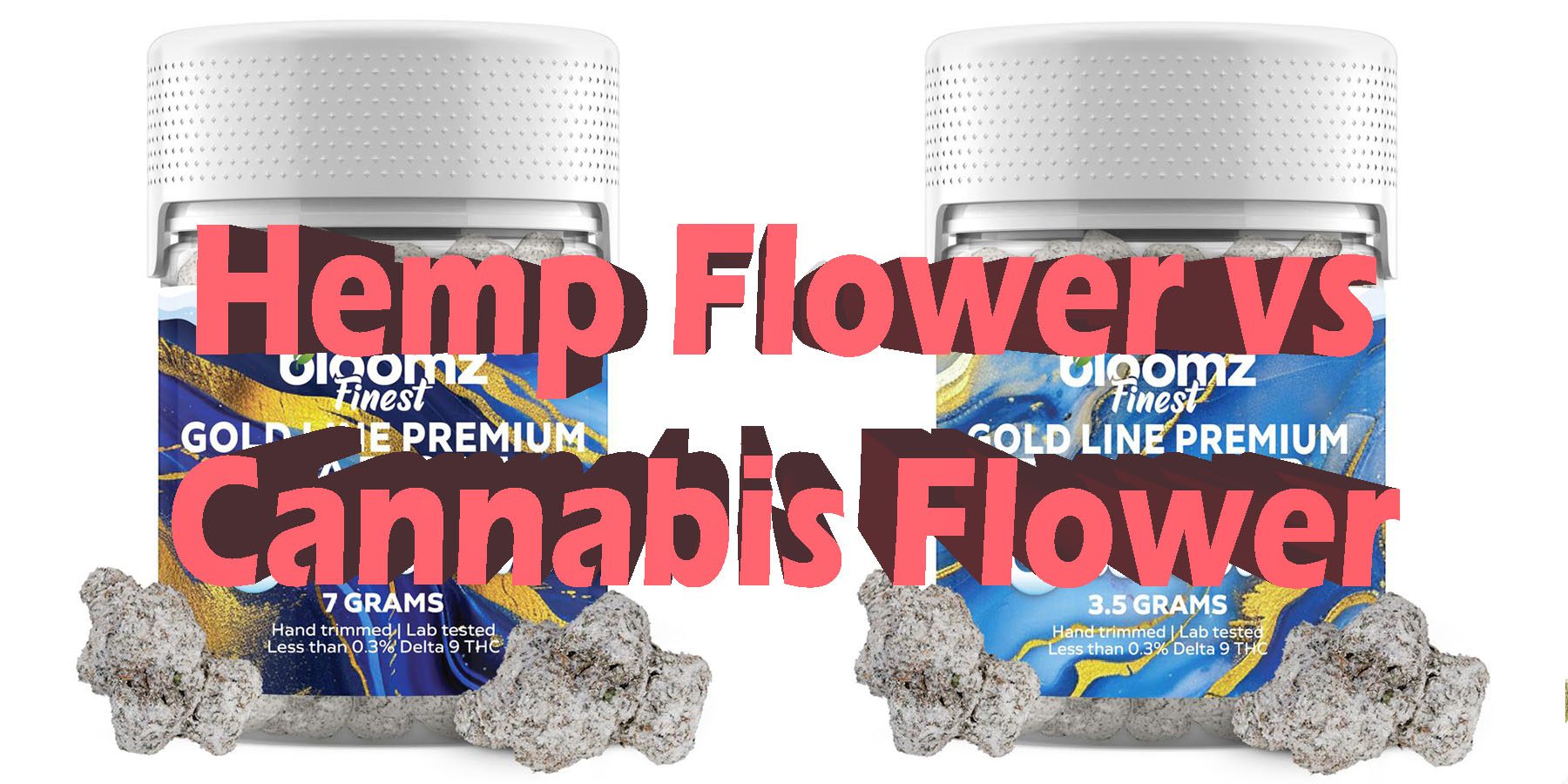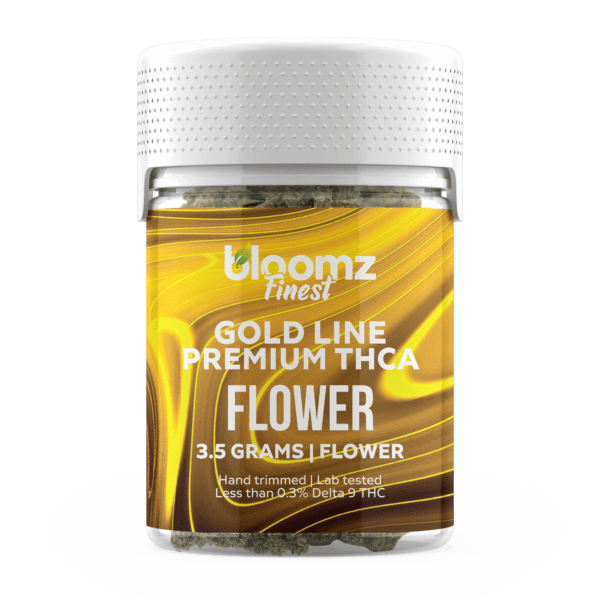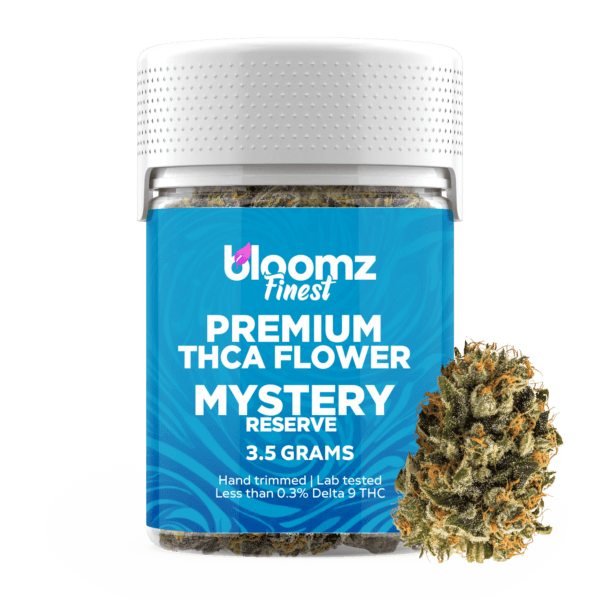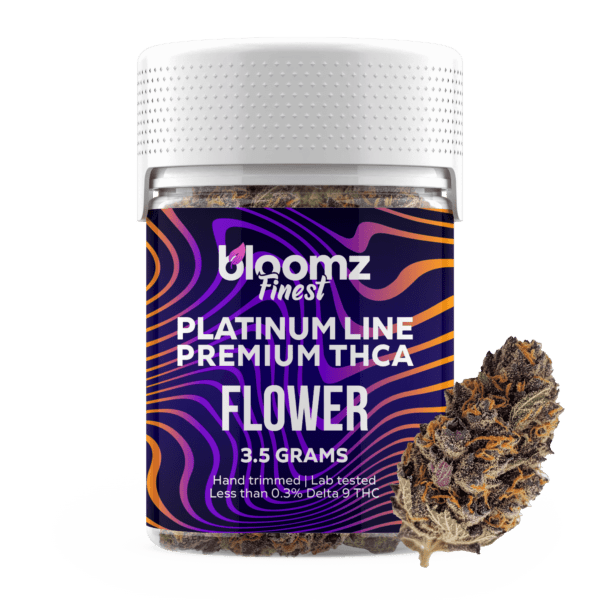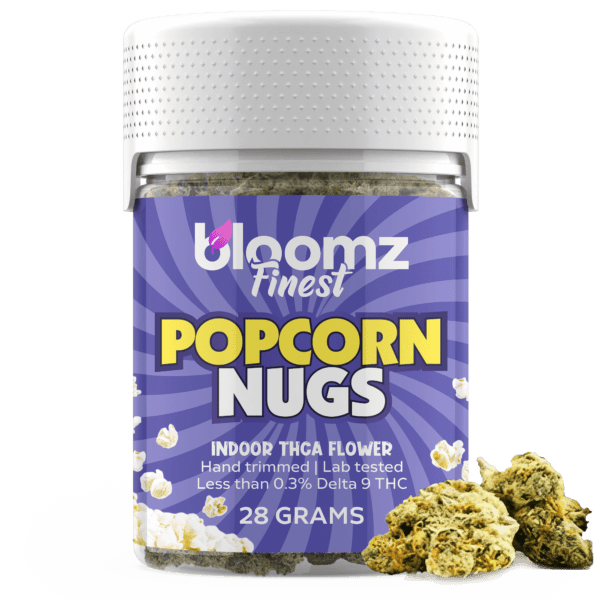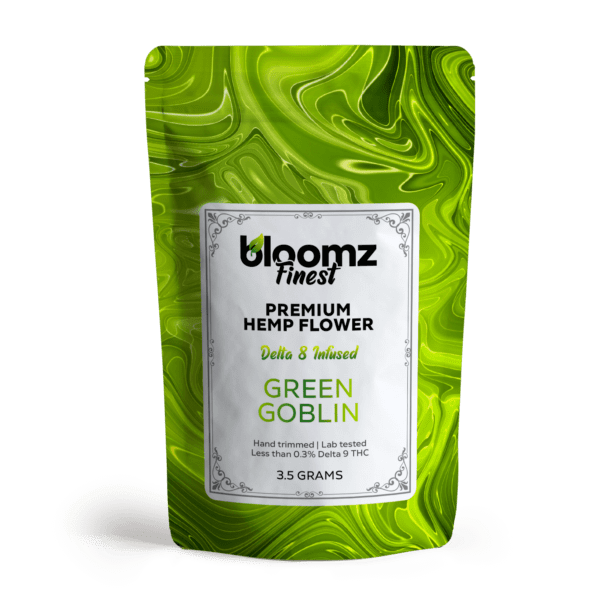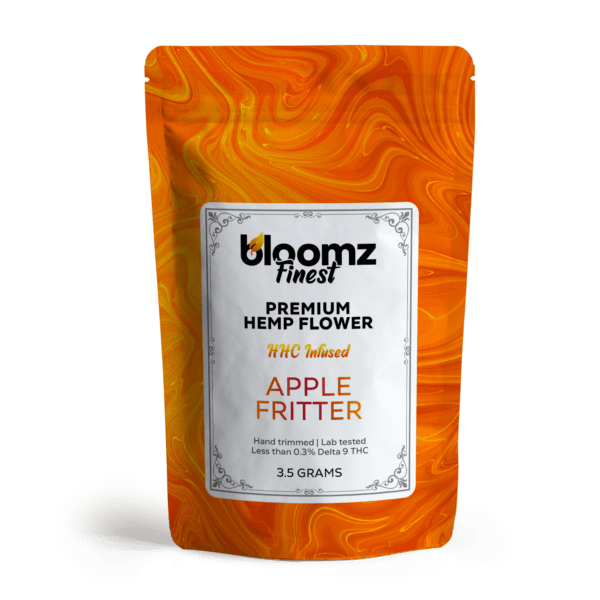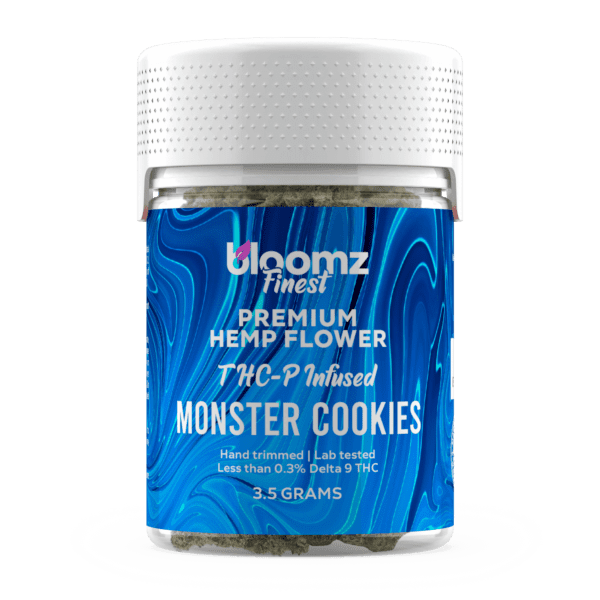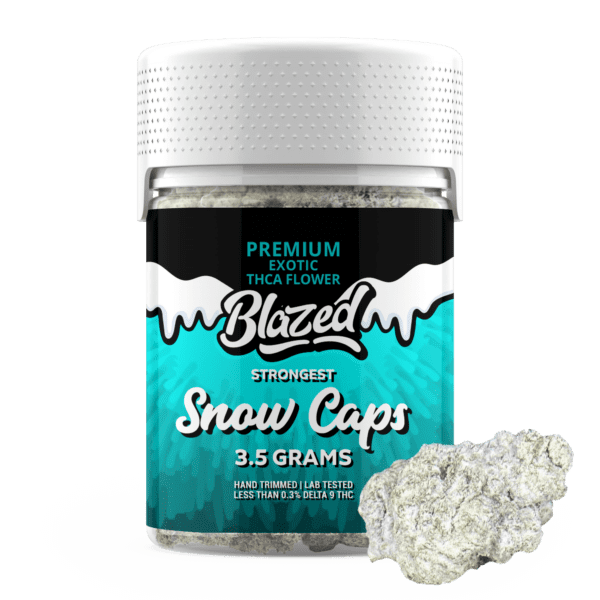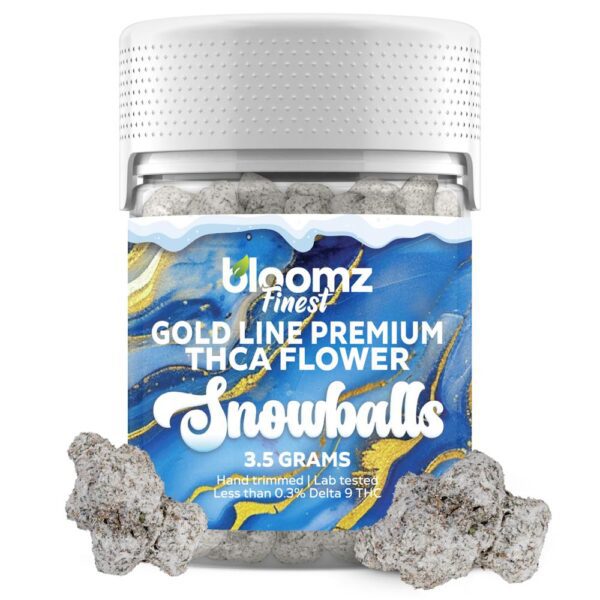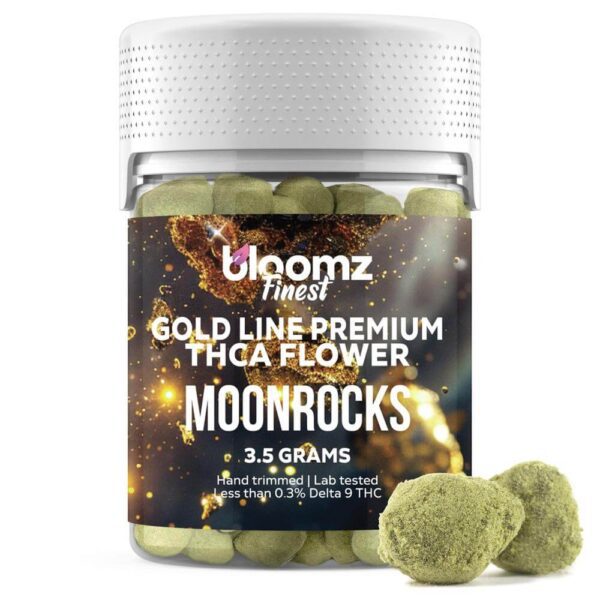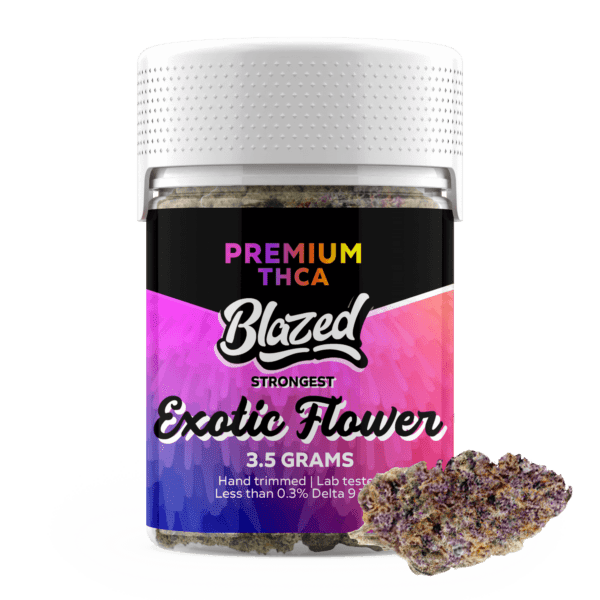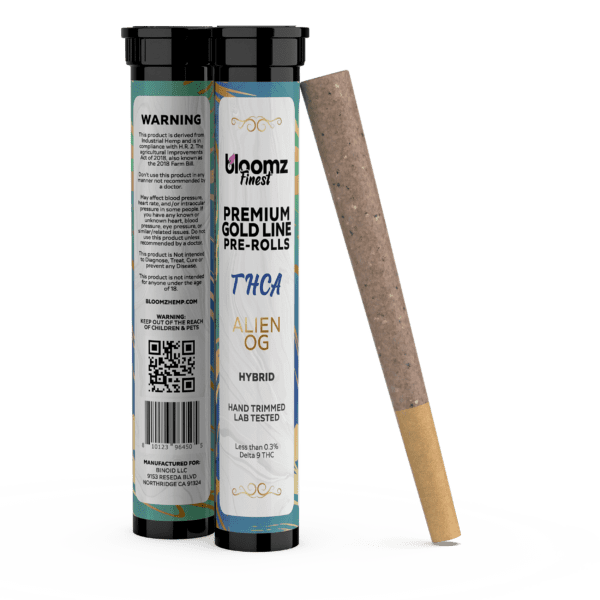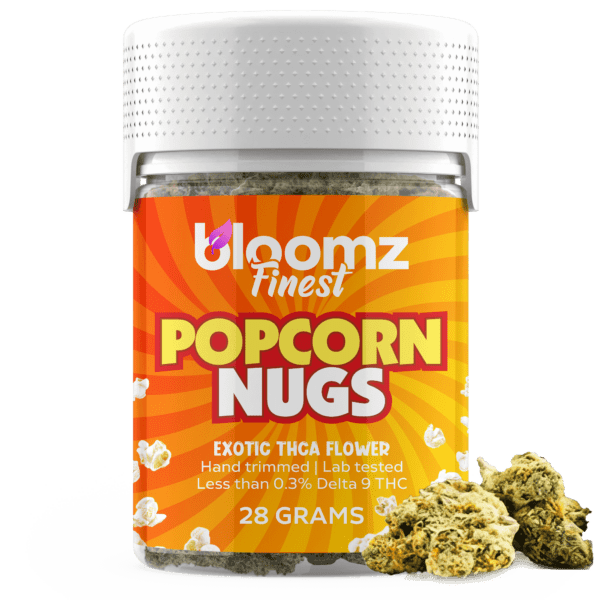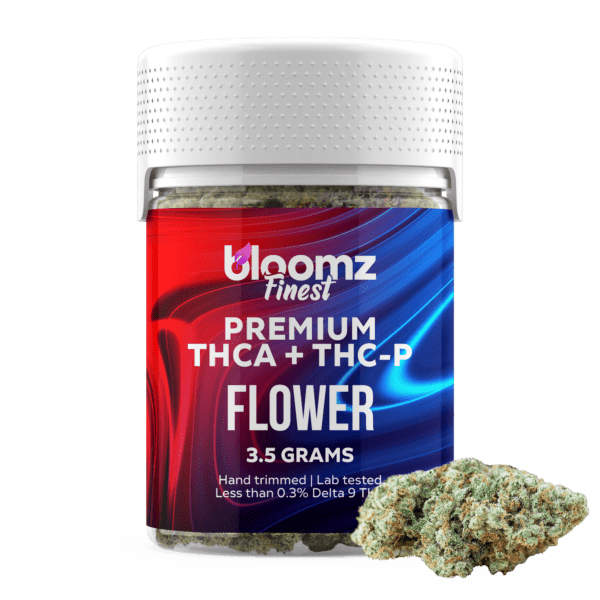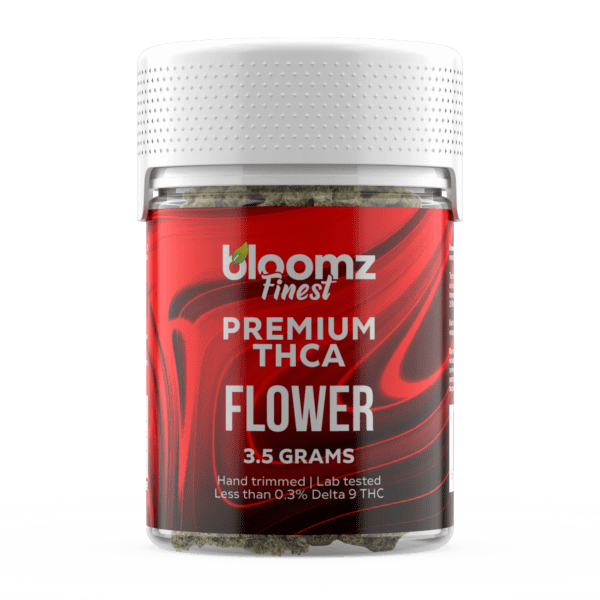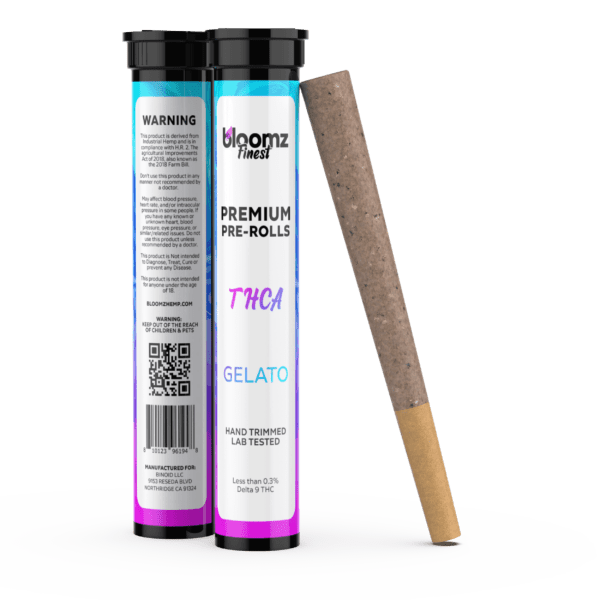The modern marketplace for botanicals is a vibrant and sometimes bewildering landscape, brimming with options that look, smell, and feel remarkably similar yet promise distinctly different experiences. Within this flourishing green world, the flowers of the Cannabis sativa plant stand out, presenting a particularly fascinating puzzle for newcomers and connoisseurs alike. You may have seen jars of glistening buds labeled as CBD flower sitting next to packages of artisanal hemp flower, all while hearing tales of the potent effects of traditional cannabis flower.
These three botanical contenders, while sharing a common ancestry and a strikingly similar appearance, are fundamentally different products shaped by genetics, law, and cultivation intent. Understanding their unique characteristics is the key to navigating this exciting terrain and discovering the perfect floral companion for your personal journey toward relaxation or bliss. This isn’t just about choosing a product; it’s about making an informed choice that aligns with your desired outcome, whether that’s a clear-headed calm, a novel sense of euphoria, or a classic, potent high.
To Buy Cannabis Flower Click Here
Recommended products
-
THCA Flower – Indoor Exotics – Gold Line
$37.99$69.99 -
THCA Flower – Mystery Reserve
$41.99$79.99 -
THCA Flower – Platinum Line
$49.99$79.99 -
THCA Smalls
$149.99$256.99
Getting to Know the 3 Main Flowers
At first glance, telling these three flowers apart can feel like an impossible task. They all share the same iconic silhouette, are often covered in a frosty layer of crystals, and can emit powerful, room-filling aromas. This striking resemblance is no coincidence; they are all derived from the same plant species, Cannabis sativa. The crucial differences that set them apart are not in their appearance but in their chemical composition—specifically, their cannabinoid profiles, which are the naturally occurring compounds within the plant that interact with the human body.
These differences are the direct result of centuries of agricultural history and, more recently, specific legislative definitions that have carved out distinct legal and commercial paths for each type of flower. Think of them as cousins from the same family, each with a unique personality and purpose cultivated through careful breeding and legal frameworks. One of the most significant commonalities they share is their versatility in consumption. For those who appreciate tradition and immediate effects, smoking remains a popular method. Whether rolled into a joint, packed into a pipe, or enjoyed through a water bong, smoking provides a direct and ritualistic way to experience the flower’s characteristics.
A more modern approach is vaping, which involves using a dry herb vaporizer to heat the flower to a temperature that releases its active compounds without combustion. This method is often preferred for its cleaner taste and the absence of smoke, allowing the subtle notes of the flower’s terpene profile to shine through. For a smoke-free and longer-lasting experience, all three cannabis flowers can be used for culinary purposes. This typically involves a process called decarboxylation (heating the flower to activate the cannabinoids) and then infusing it into a fat like butter or oil, which can then be used to create a vast array of edible treats.
Regardless of their chemical differences, the accessibility of these flowers has grown tremendously, though their points of sale often reflect their legal status. CBD flower and many types of hemp flower can commonly be found in dedicated CBD stores, smoke shops, and through a wide array of online retailers, thanks to federal legality. Traditional high-THC cannabis flower, however, is restricted to licensed dispensaries in states with medical or adult-use legalization.
It’s also vital for consumers to recognize that these are natural, agricultural products with a finite lifespan. Over time, exposure to oxygen, light, and improper temperatures will cause the cannabinoids and terpenes to degrade. This means an old flower won’t just lose its vibrant aroma and flavor; it will also lose its potency, making proper storage in an airtight, dark container essential to preserving the experience the cultivator intended to deliver.
Contender #1: CBD Flower
In the grand arena of cannabis-related botanicals, CBD flower emerges as the champion of calm without the strong psychoactive kick. To put it simply, CBD flower is flower derived from the hemp plant that has been meticulously and selectively bred to produce high concentrations of cannabidiol (CBD), while containing only trace amounts of Delta-9 tetrahydrocannabinol (THC) – the compound responsible for the classic marijuana “high”.
Legally, for a flower to be sold as hemp-derived CBD flower in the United States, its Delta-9 THC content must not exceed 0.3% by dry weight. This crucial distinction is what separates it from its high-THC cannabis cousin and is the very foundation of its federal legal status. It offers users the opportunity to enjoy the rich flavors and aromas of cannabis and experience a profound sense of relaxation without the significant cognitive alterations or intense euphoria associated with traditional cannabis.
The journey from a tiny seed to a premium, smokable CBD flower is a testament to the art and science of modern agriculture, a process demanding precision, patience, and a deep understanding of the plant’s biology. The resulting product is a direct reflection of the care and expertise invested at every stage, ensuring a safe, potent, and enjoyable experience for the end user. This multi-step process below essentially marries horticultural tradition with cutting-edge scientific verification; all aimed at producing a cannabis flower that is not only compliant with federal law but also rich in beneficial compounds and free from harmful contaminants:
Strain Selection & Genetic Foundation: The process begins long before a seed is ever planted, starting in the world of genetics. Expert breeders painstakingly select and cross-pollinate hemp plants that exhibit naturally high levels of CBD and extremely low levels of THC. This is a multi-generational effort, involving careful phenotype hunting to identify individual plants with the most desirable traits—not just high CBD content, but also robust terpene profiles for flavor and aroma, dense bud structure, and resistance to pests and disease. Through repeated back-crossing and stabilization, breeders create consistent and reliable strains that will reliably produce legally compliant and high-quality flowers, setting the entire operation up for success from the very beginning. This genetic blueprint is the single most important factor in determining the final quality of the cannabis flower.
Meticulous Cultivation: Once a winning strain is chosen, the cultivation phase begins, which can take place outdoors, in a greenhouse, or entirely indoors. Indoor and greenhouse environments offer the grower unparalleled control over critical variables like light cycles, temperature, humidity, and carbon dioxide levels, which can push the plant to produce higher densities of trichomes—the resin glands that create cannabinoids and terpenes. Growers use specialized nutrient regimens tailored to the plant’s life stage, providing a nitrogen-rich diet during its vegetative growth and shifting to phosphorus and potassium-heavy foods during the flowering stage to support bud development. The goal is to nurture the female plants and prevent pollination, which would cause the plant to produce seeds and divert energy away from resin production.
Precision Harvesting: Determining the perfect moment to harvest is a critical skill that directly impacts the potency and chemical profile of the final product. Growers don’t just rely on a calendar; they become amateur botanists, using magnifying tools to closely inspect the trichomes on the flowers. These tiny, mushroom-shaped glands undergo a visible transformation, shifting from clear to a milky white color, which indicates peak CBD production. If left for too long, they will turn amber, signifying that the CBD has begun to degrade. At this optimal moment, the plants are carefully cut down, either by harvesting the entire plant or individual branches, in preparation for the crucial post-harvest processing.
The Art of Drying & Curing: Harvesting is only half the battle; the drying and curing process is what truly distinguishes mediocre cannabis flower from a top-shelf product. The freshly harvested plants are hung upside down in a dark, climate-controlled room with carefully managed temperature (typically 60°F-70°F) and humidity (around 45%-55%). This slow drying process, which can take one to two weeks, prevents the growth of mold and preserves the volatile terpenes that are responsible for the flower’s aroma and nuanced effects. After drying, the buds are trimmed from the stems and placed into airtight containers, usually glass jars, for the curing phase. This involves “burping” the jars daily to release moisture and gases, a process that can last for several weeks or even months, resulting in a smoother, more flavorful, and more potent flower.
Final Trimming & Third-Party Verification: After curing, the cannabis flower undergoes a final trim to remove any remaining sugar leaves, which can make the smoke harsher. This can be done by machine, which is faster, or by hand, which is more precise and better preserves the delicate trichomes, resulting in a more aesthetically pleasing and potent final product often sold at a premium. The last and most critical step before packaging is sending a sample from the batch to an independent, third-party laboratory. This lab performs a comprehensive analysis, creating a Certificate of Analysis (COA) that verifies the flower’s CBD and THC potency to ensure legal compliance. It also tests for the presence of harmful contaminants like pesticides, heavy metals, mold, and bacteria, providing the ultimate stamp of quality and safety for the consumer.
The story of CBD flower is deeply intertwined with the broader history of hemp in the United States. For centuries, hemp was a vital agricultural commodity, grown for its durable fiber used in rope, sails, and textiles. However, the 20th Century saw all forms of cannabis, including non-intoxicating hemp, effectively banned. The tide began to turn with a growing understanding of the cannabis plant’s diverse compounds. The true renaissance for CBD flower was sparked by the passage of the 2014 Farm Bill, which allowed states to implement pilot programs for hemp cultivation for research purposes.
This opened the floodgates for research into high-CBD genetics. The landmark 2018 Farm Bill solidified this progress by federally legalizing the cultivation, processing, and sale of hemp, officially defining it as cannabis containing less than 0.3% Delta-9 THC and removing it from the Controlled Substances Act. This single piece of legislation created the thriving national market for CBD flower we see today. The legality of CBD flower in the USA is a direct result of the 2018 Farm Bill. This bill legalized hemp and hemp-derived products, including CBD flower, at the federal level.
This means that, in principle, it is legal to grow, sell, purchase, and possess CBD flower across the country, and it can be shipped across state lines. However, the legal landscape is not entirely uniform. The bill gave states the authority to create their own regulatory frameworks for hemp. As a result, a handful of states have enacted laws that specifically restrict or ban the sale of smokable hemp cannabis flowers, often due to the difficulty law enforcement faces in visually distinguishing it from illegal high-THC cannabis. Therefore, while federally legal, it remains crucial for consumers to be aware of their specific state and local regulations regarding smokable hemp products.
When consumed, CBD flower offers a unique suite of effects, such as:
A Clear-Headed Calm: Unlike high-THC cannabis, CBD flower does not produce significant intoxicating effects. Users typically report feeling deeply relaxed and at ease while maintaining mental clarity, allowing them to remain functional, focused, and in control of their thoughts and actions.
Full-Body Relaxation: Many consumers describe the primary effect as a noticeable release of physical tension throughout the body. It can feel as though the muscles are gently unwinding, leading to a comfortable and peaceful physical state that is often described as being “chilled out.”
Enhanced Sense of Well-Being: By promoting a state of calm and tranquility, CBD flower can contribute to an overall improved sense of well-being and contentment. It helps to quiet the mental chatter and foster a more positive and peaceful outlook without inducing an artificial or overwhelming euphoria.
The Entourage Effect: CBD flower contains a full spectrum of cannabinoids and terpenes found in the hemp plant. This allows users to experience the “entourage effect,” a theory suggesting that these compounds work together synergistically to produce a more robust and nuanced experience than CBD isolate alone could provide.
Who CBD Flower is For
CBD flower is an excellent choice for a wide range of individuals seeking the botanical benefits of the cannabis plant without stepping into the world of intense psychoactive experiences. So, basically it’s for:
Individuals looking for a natural way to unwind and decompress after a long day or during a quiet weekend.
Users who are sensitive to the effects of THC or wish to avoid any form of intoxicating high for personal or professional reasons.
People who enjoy the sensory ritual of smoking or vaping—the aroma, the flavor, the act itself—but want to remain clear-headed and present.
Those who are new to cannabis products and want to start with a gentle, non-overwhelming option.
Wellness enthusiasts who wish to incorporate the calming properties of cannabinoids into their holistic lifestyle practices, such as meditation or yoga.
Recommended products
Contender #2: Hemp Flower
While CBD flower is a specific type of hemp flower, the term “hemp flower” has evolved to encompass a much broader and more diverse category of products. In today’s innovative market, hemp flower refers to any flower from a legally defined hemp plant (containing less than 0.3% Delta-9 THC) that has been cultivated to be rich in a variety of cannabinoids, not just CBD. This category represents the cutting edge of the cannabis industry, where breeders and producers are exploring the potential of “minor” or “alternative” cannabinoids. You see, these flowers offer a wide spectrum of experiences, from non-intoxicating focus to varying levels of blissful euphoria, all while technically adhering to the federal definition of hemp.
The creation of these diverse hemp flowers is a sophisticated process that builds upon the techniques used for CBD flower but often requires additional, highly specialized steps to achieve the desired cannabinoid profile. For naturally bred flowers, the focus is on advanced genetic selection, while for others, it involves post-harvest processing and conversion to create cannabinoids that are only present in trace amounts in the plant. This intricate craftsmanship allows for a tailored user experience that goes far beyond what was imaginable just a few years ago. Here’s how it’s done:
Targeted Genetic and Cannabinoid Development: The journey for a specialty hemp flower begins with a highly specific goal. For a CBG flower, breeders must identify and propagate genetics that naturally express high levels of Cannabigerol (CBG), often called the “mother cannabinoid” from which others are synthesized by the plant. For THCA flower, the goal is to cultivate strains that produce high levels of Tetrahydrocannabinolic acid (THCA), the non-intoxicating precursor to Delta-9 THC, while ensuring the final Delta-9 THC level remains below the 0.3% legal threshold in its raw state. This requires immense precision and an expert-level understanding of plant genetics to create stable and compliant cultivars.
Specialized Cultivation and Environmental Tuning: Growers cultivating these unique hemp flowers often employ highly specialized techniques to influence the plant’s cannabinoid production. This can include manipulating the light spectrum, adjusting nutrient formulas, and even applying specific environmental stressors at key points in the growth cycle to encourage the plant to produce more of the target compound. For instance, a grower might use specific UV lighting to enhance the production of certain cannabinoids or terpenes. The entire growing environment is fine-tuned to achieve a very specific chemical outcome, making it a far more scientific endeavor than standard agriculture.
Harvesting Based on Peak Cannabinoid Timing: The timing of the harvest is absolutely critical and varies significantly depending on the target cannabinoid. For CBG flower, plants often need to be harvested earlier than typical CBD or THC strains, as CBG is a precursor that converts into other cannabinoids like CBD and THC as the plant matures. To capture peak THCA levels, growers must harvest before the THCA has had a chance to degrade or convert to Delta-9 THC due to heat or light exposure. This requires constant monitoring and testing to pinpoint the precise harvest window for maximum potency of the desired compound.
Advanced Post-Harvest Processing and Infusion: For many popular hemp flowers, such as those featuring Delta-8 THC, HHC, or THC-P, the crafting process involves an additional, complex laboratory step. Since these cannabinoids exist in tiny quantities naturally, they are most often created by converting CBD isolate or distillate extracted from legally grown hemp. This conversion is a chemical process known as isomerization. The resulting potent distillate, which looks like a thick, clear oil, is then carefully and evenly applied to a base of high-quality CBD or CBG flower. This can be done through spraying or a more thorough infusion process to create the final smokable flower, which delivers the effects of the novel cannabinoid.
Comprehensive and Multi-Faceted Lab Analysis: For these advanced hemp flowers, third-party lab testing is arguably even more critical and complex. The Certificate of Analysis (COA) must not only confirm that the flower’s Delta-9 THC content is below the 0.3% legal limit but also verify the potency of the advertised novel cannabinoid (e.g., Delta-8 THC, HHC, THCA). Furthermore, for converted products, the COA is essential for ensuring the final flower is free from any residual solvents or chemical reagents that may have been used during the isomerization process. This comprehensive testing is the consumer’s ultimate assurance of safety, legality, and product integrity.
The history of this broader category of hemp flower is very recent, representing a second wave of innovation that followed the initial CBD boom created by the 2018 Farm Bill. Once CBD became a mainstream commodity, savvy producers and chemists began looking at the text of the Farm Bill more closely. They realized that the law specifically limited the concentration of Delta-9 THC, leaving a legal gray area for other cannabinoids, including intoxicating ones that could be derived from federally legal hemp.
This legal loophole, combined with consumer demand for new and legally accessible experiences, sparked a chemical renaissance. Entrepreneurs began investing in the technology to isolate minor cannabinoids and, more significantly, to convert abundant CBD into isomers like Delta-8 THC, Delta-10 THC, and others, creating a brand-new, multi-billion-dollar segment of the market almost overnight. The legality of this diverse range of hemp flower is one of the most contentious and rapidly evolving topics in the cannabis world. While these products derive from federally legal hemp, their status is complex.
The Drug Enforcement Administration (DEA) has suggested that cannabinoids created synthetically could be considered controlled substances, even if derived from hemp, leading to significant debate over whether the chemical conversion of CBD falls into this category. In response to the proliferation of intoxicating hemp products, many states have taken matters into their own hands, explicitly banning or heavily regulating specific cannabinoids like Delta-8 THC and Delta-10 THC. Meanwhile, THCA flower occupies its own gray area; it is technically legal hemp if its Delta-9 THC content is below 0.3%, but since it readily converts to illegal Delta-9 THC when heated (smoked or vaped), its legal standing is precarious and varies by jurisdiction.
The effects of these various hemp flowers are incredibly diverse, offering a customized journey for nearly any preference. This variety below is what makes the modern hemp market so exciting, as it provides a wide spectrum of feelings and potencies:
CBG Flower: Often described as providing a non-intoxicating, clear-headed sense of focus and alertness. Users may feel a heightened sense of calm and well-being without any fogginess, making it popular for daytime use to enhance productivity or concentration.
CBN Flower: Primarily associated with deeply relaxing and sedative-like effects. Cannabinol (CBN) is a cannabinoid that forms as THC ages, and it is often sought after by those looking to promote a state of profound tranquility and prepare for a restful night.
Delta 8 THC Flower: Known for delivering a mild to moderate sense of bliss and euphoria. It is often described as a more “chilled out” and less intense version of traditional THC, providing noticeable relaxation and a happy mood boost with a lower likelihood of overwhelming feelings.
THCA Flower: In its raw form, this flower is non-intoxicating. However, when it is heated through smoking or vaping, a process called decarboxylation converts the THCA directly into Delta-9 THC. Therefore, its effects are essentially identical to traditional high-THC cannabis, producing a potent and classic euphoric high.
Delta 10 THC Flower: Commonly reported to produce more uplifting and energizing euphoric effects when compared to Delta-8. Users often seek it out for creative pursuits or social situations, as it’s associated with a stimulating and cerebral buzz.
THCV Flower: Tetrahydrocannabivarin (THCV) is noted for providing a clear-headed, stimulating, and motivating experience. Some users also report that it has appetite-suppressing qualities, distinguishing it from the “munchies” effect often associated with THC.
HHC Flower: Hexahydrocannabinol (HHC) is known for being very similar in effect to traditional Delta-9 THC. It produces a substantial feeling of euphoria and relaxation that many users report is more stable and has a longer shelf life than THC.
THC-P Flower: Tetrahydrocannabiphorol (THC-P) is a highly potent cannabinoid known to be significantly stronger than conventional THC. It produces an exceptionally powerful and intense euphoric experience and should be approached with caution, even by experienced users.
THC-B Flower: Tetrahydrocannabutol (THC-B) is another potent cannabinoid that is reported to deliver a strong, blissful, and deeply happy high, comparable in intensity to other potent alternatives.
THC-H Flower: Tetrahydrocannabihexol (THC-H) is one of the newer and more potent cannabinoids to hit the market, said to provide a powerful and profoundly euphoric experience with a long-lasting duration.
Who Hemp Flower is For
This broad and exciting category of hemp flower is suited for the following:
Cannabis enthusiasts who are interested in experimenting with different types of euphoric, blissful, or relaxing feelings.
Individuals living in states where traditional cannabis is still illegal, who can use these federally legal hemp-derived products to access similar experiences.
Users who want to fine-tune their experience, such as seeking focus with CBG, a mild buzz with Delta-8, or an uplifting feeling with Delta-10.
Experienced cannabis consumers who are looking for novel, different, or even more potent effects from newly discovered cannabinoids like THC-P and THC-H.
Anyone who enjoys variety and wants to have a toolkit of different cannabis flower to suit different moods, occasions, and desired outcomes.
Recommended products
-
THCA Moonrocks – Gold Line
$57.99$89.99 -
Blazed Exotic THCA Flower
$36.99$79.99 -
Exotic THCA Pre-Rolls Gold Line – 3-Pack/6 Pack
$36.99$69.99
Contender #3: Cannabis Flower
Cannabis flower, often referred to by its historical name, marijuana, stands as the original and most well-known contender in this floral matchup. This is the flower from the Cannabis sativa plant that has been specifically cultivated for generations to produce high concentrations of Delta-9 THC, the primary psychoactive compound that defines its effects and its legal status. Unlike hemp, which is legally capped at 0.3% Delta-9 THC, cannabis flower routinely contains THC levels ranging from 15%-30%+.
This high THC content is the very reason it is sought after, as it is responsible for producing the potent and profound effects, including the classic euphoric “high,” that have made it famous throughout human history. Its consumption is geared towards recreational enjoyment, spiritual exploration, and profound shifts in perception and mood.
The craft of cultivating high-THC cannabis flower is a practice refined over decades by both clandestine growers and modern, licensed professionals. The objective is singular: to maximize the plant’s production of THC and its rich profile of aromatic terpenes. This meticulous process transforms a simple seed into a dense, resinous, and potent flower, with every step optimized to enhance the final psychoactive and sensory experience for the consumer. The level of detail and control in modern cannabis cultivation is a marvel of agricultural science. Here’s how it’s done:
Genetic Selection for Potency and Profile: The foundation of potent cannabis flower is elite genetics. Breeders select and cross-pollinate plants that demonstrate exceptional THC production, but that’s only the beginning. They also focus on creating unique and desirable terpene profiles, which produce the flower’s distinct aromas—from citrus and pine to earthy and gassy—and are believed to modulate the high, contributing to the nuanced differences between strains. Furthermore, genetics are chosen for specific growth characteristics, such as whether they will grow into the short, bushy plants typical of Indica varieties or the tall, lanky structures associated with Sativa strains.
The Perfected Cultivation Environment: To achieve the highest possible potency, premium cannabis is most often grown indoors or in light-deprivation greenhouses. This gives the cultivator complete and total command over every aspect of the plant’s environment. Growers can dial in the perfect temperature, humidity, and airflow. Most importantly, they have absolute control over the light cycle, using powerful, specialized lamps to mimic the sun. Providing 18 or more hours of light keeps the plant in a vegetative state, while switching to a strict 12-hours-on, 12-hours-off schedule triggers the plant to enter its flowering phase and begin producing the coveted THC-rich buds.
Harvesting at the Peak of Psychoactivity: As with other types of cannabis, timing the harvest is a make-or-break moment for quality. For high-THC cannabis, growers are watching the trichomes with an almost obsessive focus, waiting for them to signal peak THC concentration. The ideal moment is typically when most of the clear trichomes have turned a milky or cloudy white. This cloudy appearance indicates that THC levels are at their absolute apex. If the grower waits too long and the trichomes turn amber, it signifies that the THC has begun to degrade into CBN, which can result in a less potent and more sedative effect.
The Artform of a Slow Cure: While drying and curing are important for all flower types, in the world of craft cannabis, it is elevated to a true art form. After a slow, controlled drying process, the trimmed buds are sealed in glass jars for a lengthy cure that can last from several weeks to many months. This patient process is essential for developing the flower’s complex flavor and aroma profile and for ensuring a smooth, non-harsh smoke. A proper cure breaks down chlorophyll and allows the terpenes to fully mature, resulting in a product that is vastly superior in every sensory aspect to one that has been rushed.
Rigorous Quality Control and State-Mandated Verification: Once the flower is perfectly cured, it is prepared for sale, which often includes a final, detailed hand-trim to give it a manicured, top-shelf appearance. In every legal cannabis market in the United States, all products must undergo stringent third-party lab testing before they can be sold at a licensed dispensary. This Certificate of Analysis is non-negotiable and provides a detailed report on the flower’s exact potency, listing the percentages of THC, CBD, and other cannabinoids. Crucially, it also screens for any harmful contaminants like pesticides, heavy metals, mold, and microbials, guaranteeing a safe and transparent product for the consumer.
The history of cannabis flower is as old as civilization itself, with evidence of its use dating back thousands of years in various cultures for medicinal, spiritual, and recreational purposes. In the United States, it was widely used in tinctures and was a common agricultural crop until the early 20th Century. Fueled by political and social factors, the tide turned dramatically with the passage of the Marihuana Tax Act of 1937, which began its long period of prohibition. This culminated in its classification as a Schedule I substance under the Controlled Substances Act of 1970, which declared it to have a high potential for abuse and no accepted medical use. This federal stance remains unchanged, but a powerful counter-movement began in 1996 when California became the first state to legalize cannabis for medical use, kicking off a cascade of state-level legalization that continues to this day.
The legality of high-THC cannabis flower in the United States is defined by a fundamental conflict between federal and state law. Federally, it remains an illegal Schedule I controlled substance. However, a significant and growing number of states have established their own laws, creating legal markets for medical cannabis, adult-recreational cannabis, or both. This has resulted in a complex patchwork of regulations across the country. In states where it is legal, the sale, possession, and consumption of cannabis flower are strictly regulated, with licensed dispensaries being the only legal point of sale. This ongoing friction between federal prohibition and state-level legalization is the central political and legal issue shaping the modern cannabis industry.
The effects of consuming high-THC cannabis flower are potent and multi-faceted, centered around a powerful psychoactive experience that alters perception, mood, and consciousness. The specific nature of this experience can vary dramatically depending on the strain’s genetic lineage, which is often categorized as Indica, Sativa, or Hybrid:
Potent Euphoria and Bliss: The most prominent effect is a strong feeling of euphoria, often accompanied by happiness, giddiness, and an elevated mood. This sense of bliss is the primary reason many people seek out high-THC cannabis for recreational and social enjoyment.
Altered Sensory Perception: Users frequently report an enhancement of the senses. Colors may appear more vibrant, music can sound more complex and immersive, and the sense of taste and touch can be heightened, leading to a richer sensory experience of the world.
Sativa-Dominant Strain Effects: Sativa strains are commonly associated with a more cerebral, uplifting, and energizing high. Users often report feeling more creative, talkative, and motivated, making these strains a popular choice for daytime activities, artistic endeavors, and social gatherings.
Indica-Dominant Strain Effects: Indica strains are best known for producing profound physical relaxation and a tranquil state of mind. The effects are often described as a “body high” or “couch-lock”, making them a favorite for evening use, watching movies, or simply unwinding into a state of deep calm.
Hybrid Strain Effects: Hybrid strains are bred from both Indica and Sativa parents and are intended to offer a more balanced combination of effects. Depending on their specific genetic lineage, they can provide a versatile experience that might start with a cerebral Sativa-like feeling and slowly transition into a relaxing Indica-like body sensation.
Who Cannabis Flower is For
High-THC cannabis flower is intended for adults in states where it is legally regulated who are seeking a potent and classic psychoactive experience. It appeals to a specific audience such as:
Recreational users seeking a powerful sense of euphoria, bliss, and enjoyment for social or personal purposes.
Individuals looking to explore altered states of consciousness or gain new perspectives.
Creative people, such as artists, musicians, and writers, who find that it can help break down creative barriers and foster inspiration.
Connoisseurs who appreciate the art of cultivation and enjoy exploring the vast world of different strains, each with its unique flavor profile and nuanced effects.
Users seeking the specific and distinct experiences offered by Sativa, Indica, or Hybrid varieties to match a particular mood or activity.
What Exactly Should You Be Looking For When Attempting to Purchase Any of These Flowers?
Navigating the vibrant shelves of a dispensary or the endless pages of an online store can be overwhelming, but becoming a discerning consumer is the best way to ensure you get a safe, effective, and enjoyable product. High-quality cannabis flower, regardless of its primary cannabinoid, is the result of careful cultivation, proper handling, and transparent business practices. Knowing what to look for empowers you to see past clever marketing and identify true quality. By arming yourself with knowledge about these key indicators below, you can confidently select a flower that meets your expectations and provides the exact experience you are seeking:
Third-Party Lab Reports (Certificate of Analysis – COA): This is the single most important tool for any cannabis consumer. A COA from a reputable, accredited third-party lab is your guarantee of safety and transparency. Do not purchase any flower that does not have an accessible and recent COA. This document provides a precise breakdown of the cannabinoid profile, confirming the potency of CBD, THC, CBG, or any other advertised compound. Crucially, it also includes screening results for harmful contaminants like pesticides, heavy metals, residual solvents, mold, and bacteria. Learning to read a COA is learning to see the true quality of the product beyond its appearance.
The Complete Cannabinoid Profile: While you may be shopping for a specific cannabinoid like CBD or THCA, it’s wise to look at the entire cannabinoid profile listed on the COA. The presence of other minor cannabinoids, such as CBG, CBN, or CBC, even in small amounts, can contribute to a more well-rounded and effective experience. This synergistic interaction, often called the “entourage effect,” suggests that the various compounds in the flower work together to enhance and modulate one another’s effects, creating a more holistic outcome than an isolated cannabinoid could alone.
Rich Terpene Content: Terpenes are the aromatic oils that give each flower its unique scent and flavor, from the citrusy notes of Limonene to the piney aroma of Pinene. However, they do much more than just provide a pleasant smell; research suggests they play a crucial role in shaping the flower’s effects. For example, Myrcene is a terpene often associated with relaxing effects, while Limonene is believed to be more uplifting. A detailed COA will often include a terpene analysis, giving you clues about the flower’s potential effects and guaranteeing a rich, flavorful experience.
Vibrant Appearance and Trichome Density: Your eyes can tell you a lot about the quality of a flower. High-quality buds should have a vibrant, healthy color—typically shades of green, sometimes with flourishes of purple, orange, or blue—and should not look dull, brown, or yellowed. Most importantly, look for a thick, frosty coating of crystalline structures known as trichomes. These glands are the microscopic factories that produce the cannabinoids and terpenes, so a dense layer of them is a strong visual indicator of potency and a well-grown plant.
A Potent and Pleasing Aroma: Your nose is one of your best tools for assessing quality. When you open a container of high-quality cannabis flower, you should be greeted by a potent and distinct aroma. Whether it smells like berries, diesel fuel, citrus, or fresh earth, the scent should be rich and appealing. If the flower smells like hay, grass, or has a musty or damp odor, it is a clear sign of a rushed or improper drying and curing process, which will result in a harsh taste and diminished effects. A strong, pleasant “nose” is a hallmark of a carefully cured, terpene-rich product.
Brand Reputation and Sourcing Transparency: In today’s market, the reputation of the grower and the brand is paramount. Take a few minutes to research the company you are buying from. Reputable brands are transparent about their cultivation practices, where they source their genetics, and they make their third-party lab reports easy for customers to find. Reading customer reviews and seeing how the brand engages with its community can provide valuable insight into their commitment to quality and customer satisfaction. A trustworthy brand has nothing to hide.
Cultivation Practices and Methods: Understanding how the flower was grown can tell you a lot about its quality and its environmental impact. Indoor-grown cannabis flower often boasts higher potency and a more controlled, frosty appearance due to the optimized environment. Greenhouse-grown flower offers a balance, benefiting from natural sunlight while still having environmental protection. Outdoor-grown flower can be of excellent quality and is often the most sustainable option. Furthermore, look for brands that emphasize organic, sustainable, or regenerative farming practices, as this indicates a commitment to producing a clean product without the use of harmful chemical pesticides.
The Trimming Technique: The final appearance of the bud is heavily influenced by how it was trimmed. Hand-trimmed flower is considered the gold standard. While labor-intensive, this gentle and precise method preserves the delicate trichomes, resulting in a more potent and aesthetically beautiful nug. Machine-trimmed flower is more common and cost-effective, but the automated process can sometimes strip away a significant portion of the trichomes. While not always a deal-breaker, a meticulous hand-trim is often a sign of a craft, high-end product.
Proper Freshness and Cure: High-quality flower should have an ideal moisture content. When gently squeezed, it should feel slightly spongy and sticky, not overly dry and crumbly or excessively wet and soft. A bud that turns to dust when you touch it is old and will have lost much of its potency and flavor. A bud that feels damp could be a breeding ground for mold. The perfect cure results in a flower that is easy to break apart but still has a satisfying density and resilience, indicating it has been stored properly to preserve its freshness.
Absolute Legal Compliance: Finally, before making any purchase, ensure the product is legally compliant in your specific location. This means verifying the legality of high-THC cannabis in your state and only purchasing it from a licensed dispensary. For hemp-derived products like Delta-8 or THCA flower, it is crucial to check your state’s laws, as many have specific regulations or bans on these compounds. Always purchase from licensed and reputable vendors to guarantee you are receiving a product that is not only safe and effective but also fully legal to possess.
The Final Petal: Cultivating Your Perfect Experience
The journey through the world of CBD, hemp, and cannabis flower reveals a remarkable evolution in botanical choice and personal empowerment. No longer is the landscape monolithic; it has blossomed into a diverse ecosystem of options, each cultivated with a specific experience in mind. This new era invites you not just to be a passive consumer, but an active explorer, armed with the knowledge to distinguish the subtle yet profound differences that lie behind a shared appearance.
The power now rests in your hands to look beyond the leaf and understand the chemical artistry and legal frameworks that shape each bud. By embracing this understanding, you can confidently navigate the marketplace and select the floral ally that truly resonates with your personal quest for relaxation, euphoria, or blissful discovery.

